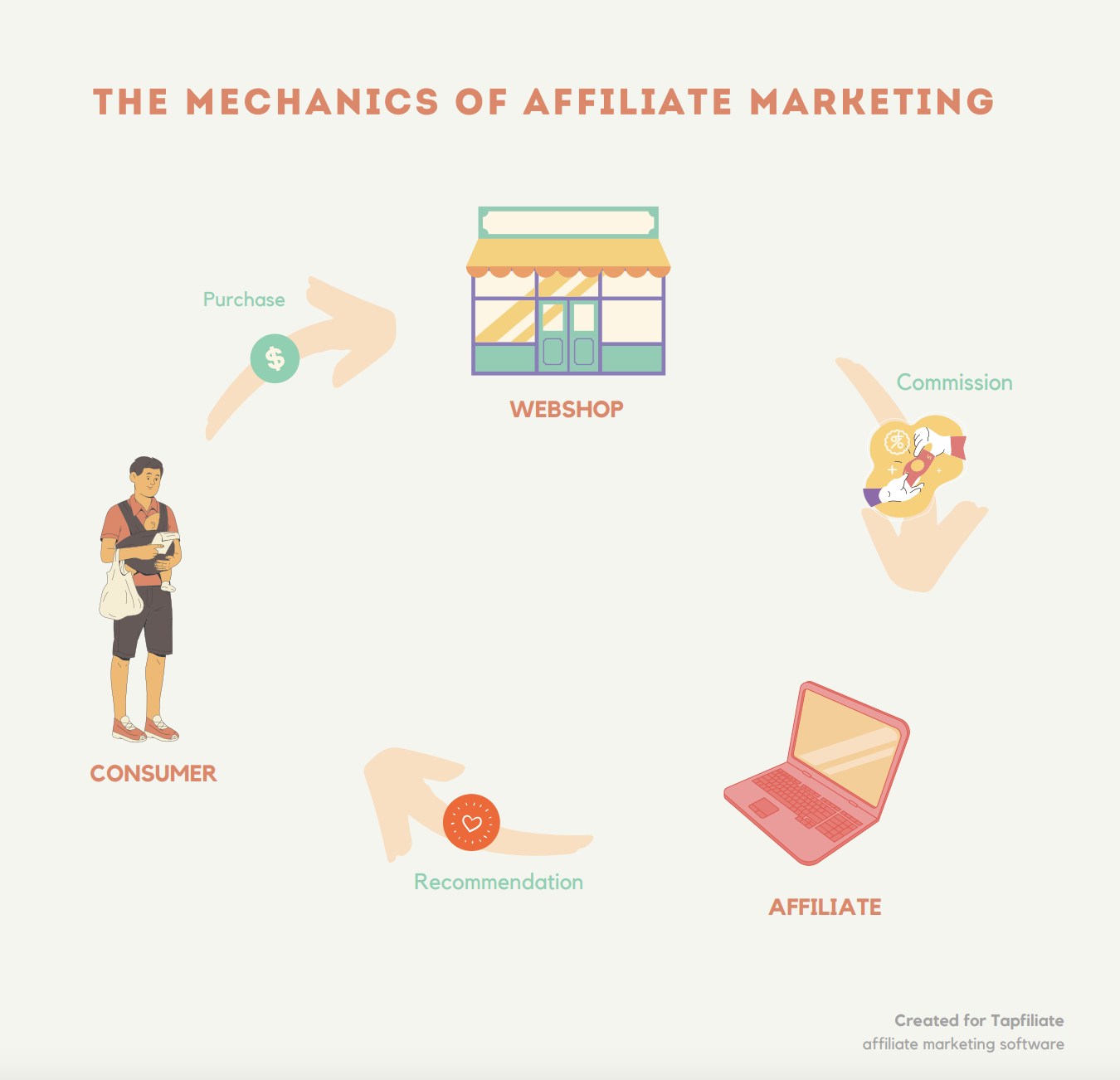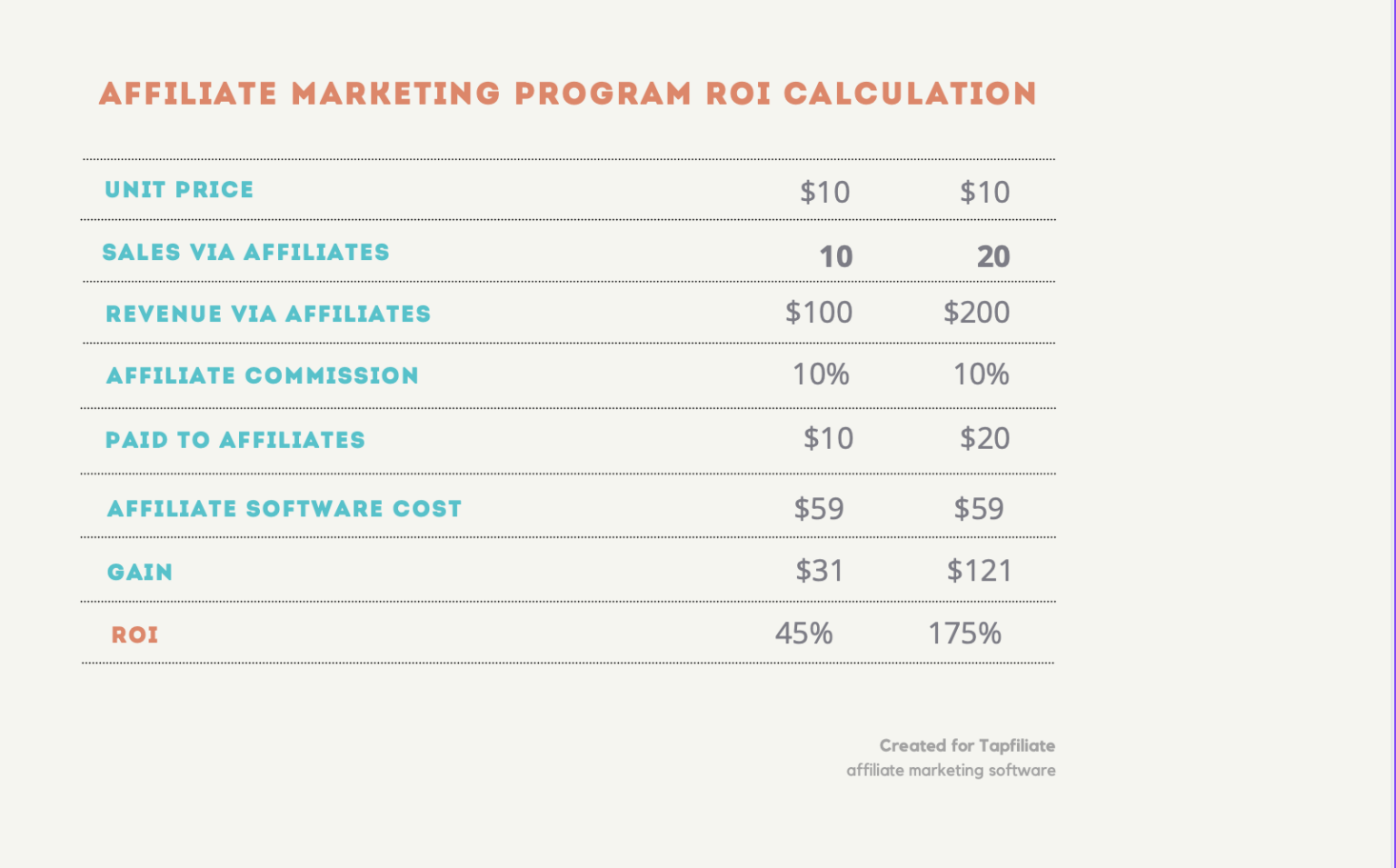Gone are the days of retail stores relying solely on foot traffic to make profits, especially if you are a small, independent retail store. Most of the articles you read online suggest creating an online store for the simple reason that you can drive more sales and you can reach a much bigger market by being online.
But what these articles miss, is how to market that online retail store. Of course, you’ll have customers who come in-store who might also shop in your online store, but you could build a business that absolutely thrives if you know how to promote that store effectively.
One of the best ways to do this is via affiliate marketing, to tap into word of mouth marketing. It’s not as obvious for a retail business as paid advertising, social media, or SEO. As a small business owner, you’ve got so much on your plate, and everyone’s trying to sell you on their service for SMM, Google Ads, bookkeeping, and even electricity! Often you simply don’t get the time to research less obvious things.
People trust other people and many websites (and influencers) have built trust with their audiences which means that they are more likely to purchase based on a recommendation from a trusted source. In fact, word of mouth marketing accounts for 13% of consumer sales. Authority hacker reports that 65% of retailers have an annual affiliate marketing revenue of up to 20%.
Even if you are a small independent retailer with a monthly revenue of $10,000, and your affiliate marketing revenue makes up 5% of this , it’s still $500 revenue per month, and $6000 annually.
Of course, 5% is a low number, but when you start looking at 10%, 15% and 20% these numbers get much more interesting. Plus, if you earn more than $8000 per month then it makes very good business sense. Plus, because you aren’t already doing affiliate marketing, these numbers will be on top of your monthly revenue.
A friend of mine is a coffee roaster with a specialty webshop for coffee and tea. I swear she’s got the best beans in town, and I love her product so much I’d wear a custom hoodie with her logo every time I go outside. Seriously though, I never miss a chance to recommend her coffees to other friends of mine. And I’m sure I’m not the only one who’d be happy to spread the word around.
That’s why I’ve decided to put this article together. And however basic it may look to the online gurus, hopefully, it will help other small business owners like my friend to understand the value and costs of affiliate marketing, and how to get started.
What is Affiliate Marketing and How Does It Work For Retail Stores?
In a nutshell, affiliate marketing is marketing business like yours via recommendations, reviews, and other word-of-mouth marketing. There are several different types of affiliates you can find to help you do this. Unlike traditional reviews on Google, Facebook, or Yelp, these recommendations are trackable. And when someone comes to your website via a review from, say, Anne B, and makes a purchase, said Anne B gets a commission. Therefore, people that leave this kind of recommendation have an affiliation with your business and are called affiliates.
Affiliates can offer their audience insights into your latest collections, unboxings, or even in-store events, so they are showcasing your products and making a personal recommendation.
So you should see a retail affiliate program as a relationship between three parties: a retail business, a consumer, and an affiliate.
Now if everything runs smoothly between you and your affiliates, they will keep sharing their recommendations and get rewarded, their audience will become your new customers, and your retail shop gets consumer reviews that are genuine, positive, and earned without any financial risk involved on your side.

How Do We Make This Happen, Technically?
This is done via a unique web link (affiliate link), or coupon code that your affiliate shares with their contacts or audience. As soon as someone clicks the link or uses the coupon code, the affiliate program software (like Tapfiliate) knows that person has come through Anne B’s recommendation. As soon as that person makes a purchase, the affiliate software gives credit to Anne B for helping with that sale (even when the purchase happens a few days or weeks later).
In affiliate marketing terms, you are now an advertiser: someone who has a product and is looking for more sales. Anne B is an affiliate, or publisher: someone who publishes information about your retail business or your consumer products and gets commission for the sales coming in via their recommendation.
In other words, an advertiser (you) pays a commission to a publisher (Anne B) who helps generate more consumer sales.
Is an Affiliate Marketing Program a Valid New Channel for Your Business?
Absolutely! It is easy to set up, low-risk, and has great potential for marketing your business. It can be more effective than other channels, with the average order value for affiliate sales being 21% higher than other marketing channels.
Besides, affiliate promotions use native methods that are more beneficial and often more powerful than traditional advertising. As a side effect, your business benefits from unique content like blog posts, reviews & testimonials, social media posts, videos, infographics, or word-of-mouth recommendations.
How Much Does It Cost You and What Is the ROI Potential?
Affiliate marketing is a low-risk marketing channel: you only pay commissions when there is a sale (unless you choose otherwise). You may, of course, choose to pay for a lead, independent of whether they buy or not (and as an affiliate tool, we at Tapfiliate give our customers such an opportunity). But this is not so common.
So if you run a specialty store that sells coffee at an average price of $10 per pack, here’s what your monthly affiliate program cost breakdown would look like. If you got as few as 8 affiliate sales per month, you achieve positive ROI, and with 18 sales per month you get 2X what you invest:

3 Common Misconceptions About Affiliate Marketing
Because affiliate marketing is a new topic for many smaller businesses, sometimes there can be misunderstandings or misconceptions about it. These are the three biggest:
You Can Turn Affiliate Marketing on and off Whenever You Want
One of the biggest mistakes that businesses make with affiliate marketing is thinking they can switch it on and off like you can with paid search. In reality, this will cause your affiliates to get frustrated at best. At worst they might go to your competitor and start promoting them in your place. If you are constantly taking away revenue from them that they would have earned by switching off the program, you are not going to be able to keep the relationship you have with them positive.
You Can Set It and Forget It
So many brands start an affiliate program and don’t do anything to get affiliates to promote them or do anything to drive additional revenue to their brand. Then they think “it doesn’t work.”
If you are a brand with an affiliate program, you need to spend time on affiliate recruitment, campaign organization, affiliate monitoring and outreach. Many people suggest between 3-5 hours per week, but if you are a small brand with no affiliates and not much brand awareness, you’ll need to spend a lot more time on affiliate recruitment
You Don’t Need to Add Websites as Affiliates if They Are Already Promoting You
This is a tricky topic – I’ve seen brands get annoyed that a website approaches them to ask to join their affiliate program when they already have an article promoting that brand that performs well. On many occasions the brand thinks that the answer should be no.
But this can lead to the website removing the content, promoting your competitor in your place, or actively avoiding promoting your brand if they move to other companies. If they are asking to become an affiliate it’s because they want to be compensated for their work – they aren’t asking for an upfront payment or compensation for driving previous sales.
Click to use our Drive ROI calculator. Please make a copy of this before editing and adding your own expenses.



